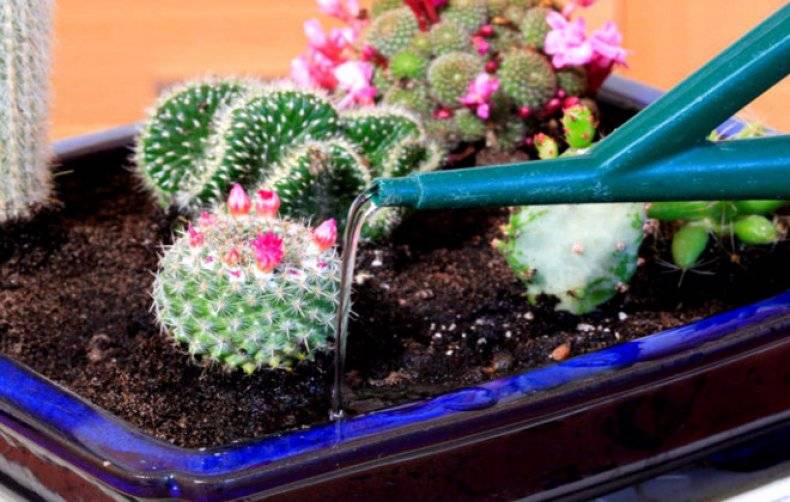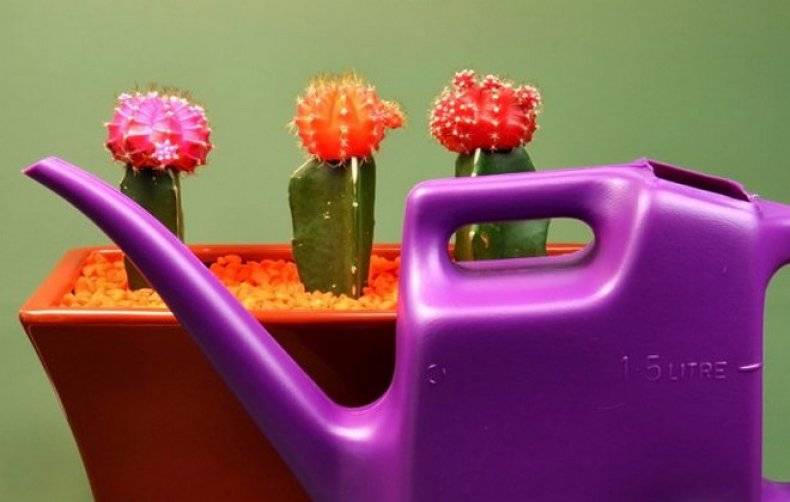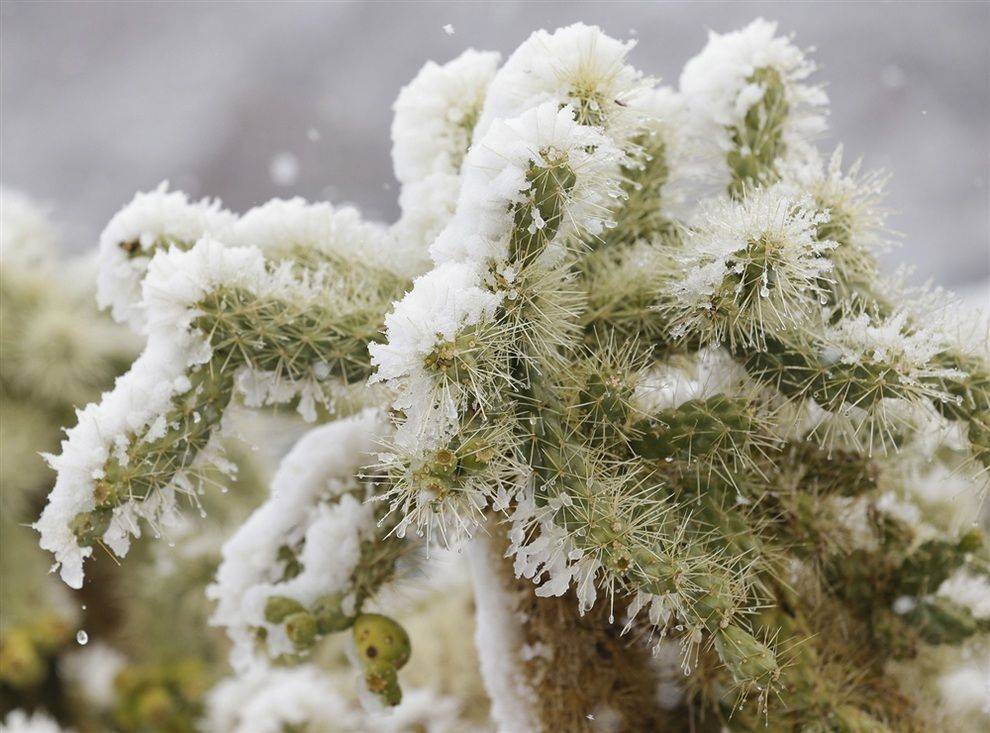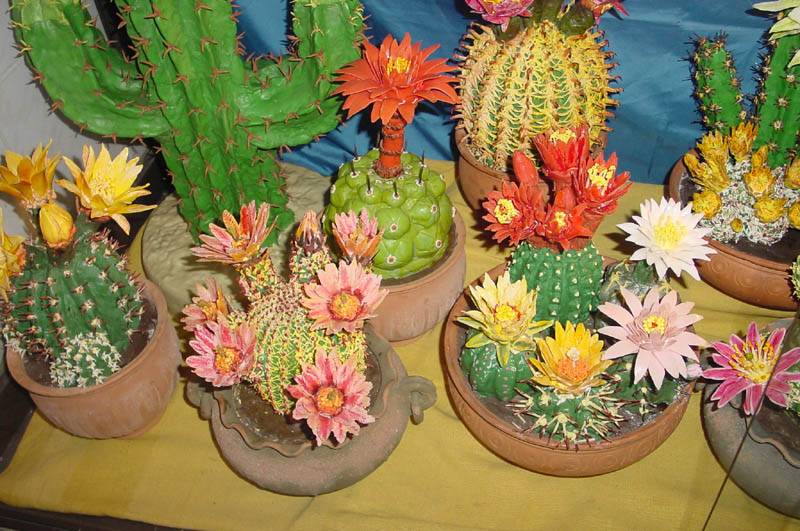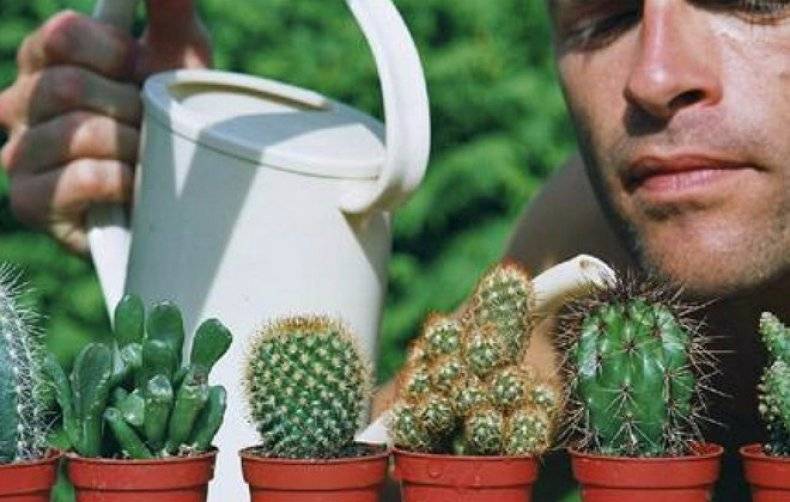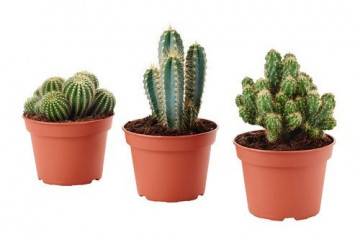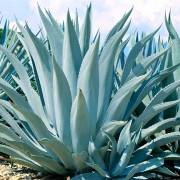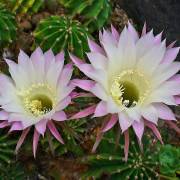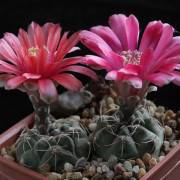How often to water a cactus: the amount and options at home
Content:
Cacti in many houses have taken their rightful place on the windowsills. And this is not so surprising, they attract many with their shapes and colors, their unpretentiousness. And although they came from the desert, this does not mean that they should not be watered at all. How often to water a cactus and what are the requirements for water, the frequency of watering at different times of the day?
Features and rules
How to water a cactus? In this matter, the first place is given to the quality of the water and the time of the procedure, even its temperature.
Time spending
Watering cacti is best done at a specific time. So, water it in the morning, regardless of the season. But if it is summer, the procedure involves adding water to the pot in the evening, avoiding burns to the leaves.
Water quality
A cactus, like any other flower, loves soft water with a low pH level, otherwise the level of alkali rises in the soil and the work of the root system is disrupted, plant growth slows down, immunity decreases and the tendency to disease increases.
- It is better to take water that has been settled or passed through a filter, soft and with a slightly acidic reaction.
- It is optimal to collect rain or melt water, if there is none, they simply boil or stand for a day.
- It should be at least room temperature.
How to water a Decembrist or a cactus in order to fertilize the soil at the same time? You can add succinic acid to the liquid, which is sold in the pharmacy in the form of tablets. They are simply dissolved in water per 1 liter of 1-2 tablets.
Temperature
The content of a cactus at home differs from the natural environment, therefore, when watering, it is important to take into account the temperature in the room. If it is high, it is watered more often, in the cold season, when the thermometer shows 10-15 ° C at home or in a greenhouse, then watering is reduced.
As for the water temperature, it should be 5-6 ° higher than room temperature. Although some experts argue that it is optimal to irrigate the plant with water, the temperature of which is 30-40 ° C, regardless of the ambient air temperature. For spraying, it is worth taking water, the temperature of which will be 50 ° C, and the spray nozzle is small.
Other nuances
In this section, we will talk about the Cactus mix and the mamillaria cactus. Not knowing how mamillaria is watered correctly, it is important to remember that waterlogging of the soil is destructive for this species. The main condition for care is that it is watered in the summer as the soil dries up, in winter it is not possible to moisten the soil at all. In the summer, you can spray the plant, while feeding it in parallel with an interval of two weeks.
What else should be considered when watering?
| Frequent procedure | A rare procedure |
| A young cactus in the stage of active growth, flowering. | At the resting stage. |
| If the plant has a strong root system. | If the plant has shallow roots. |
| If the flowerpot has a porous structure, for example, made of clay. | If the flowerpot is made of a dense, and most importantly, transparent material, for example, glass or light-colored plastic. |
| If the soil is loose and sandy with the addition of coarse sand. | If the substrate is dense, it retains moisture well. |
The frequency of the procedure is also influenced by whether the cactus is classified as dry-loving or moisture-loving. So, mamillaria are considered dry-loving, therefore they are watered less often, and zygocactus and ripsalis, on the contrary, are moisture-loving.
It is also important to take into account the age of the plant: the older it is, the more developed its root system, accordingly, it requires more moisture. Such plants take root deeper in an earthen ball, absorbing moisture from the flowerpot, so they are watered less often.
How often to carry out the procedure
Depending on the season, whether the cactus is in the flowering stage, watering can be carried out more or less often.
In winter
If it is winter outside, the cactus as such does not need water at all, since growth and development are reduced during this period. The cactus is stocked with nutrients for future flowering and active growth. Wintering a cactus provides for the following maintenance rules:
- it is better to put the plant in a room with the lowest temperature, where there is practically no lighting;
- watering is carried out no more than once a month, or even only 2 times a season.
In the spring
In the spring, the transition to the stage of active growth requires a lot of energy from the plant, therefore, watering gradually increases. The first sign that a cactus has entered the stage of active growth and development is that small buds appear on its crown, fresh greens at the point of growth. The volume of water is gradually increased, but between procedures the soil should dry completely.
For the first time, they only moisten the soil in the morning so that it is saturated with moisture by 2 cm, or simply spray the plant. It is also important to monitor the level of the night temperature, it should not fall below plus 15 ° C.
In summer
In summer, watering conditions are directly determined by the ambient temperature. The hotter the summer, the more abundant it should be, then the plant has time to evaporate moisture. In this case, watered in the evening, but if the day is cloudy and gloomy, the weather is rainy, the flower can not be watered, as it takes moisture from the environment.
In autumn
When autumn comes, the plant is gradually preparing for the dormant period and, accordingly, at this stage, the watering regime is gradually changed. To prepare the plant for successful wintering, the intervals between procedures are gradually increased in time: from weekly water application they switch to the regime once every two weeks, and then once a month.
During flowering
Most novice florists do not know how to properly water a cactus during flowering and for this very reason they make a lot of mistakes. During the period of knocking out the buds, the plant enters the stage of active awakening and after a period of winter dormancy it needs feeding and abundant watering.
After the buds begin to bloom on the plant, the frequency of irrigation is increased. If this is not done, the cactus will shed flowers and buds.
The ways
Which of the watering options is better - from above or into a pallet, then here among the flower growers disputes do not subside. The thing is that the bulk of the roots that absorb water are located at the very bottom of the pot. Regardless of this, each method has its positive and negative sides.
From above
This method is more familiar, plus you can see how much water is added, although, on the other hand, many nutrient components are washed out from the upper layers of the soil.
Through the pallet
This type is convenient, in the opinion of many flower growers, in that nutrients are not washed out of the soil, as is often the case when watering from above, but with this method it is difficult to understand how much moisture the plant needs. This option is suitable for more experienced growers who have kept cacti for a long time.
And, as many cactus owners say, there is no fundamental difference between watering into a tray or from above, it is rather a matter of experience and habit. Therefore, everyone chooses independently, as it is convenient for him.
Home care rules
With regard to caring for a cactus, watering and top dressing play an important role. And the latter, by the way, significantly depends on the frequency of watering.
How and what to water to get beautiful, red or yellow needles?
If you want to get colored needles, then you should understand that such specimens do not exist in nature, since this is a creation of human hands. In practice, there are two ways to make needles of different colors on a cactus: by adding a coloring soil to the flowerpot or by sprinkling with tinted water. The first one can be purchased in a special store, and in the second case, food coloring of any color can be added to the water.
In the matter of watering and caring for a cactus, beginners often make mistakes that can lead to the death of the plant. The most common ones are:
- frequent application of water when the soil is not completely dry;
- lack of water when the roots do not receive enough moisture;
- watering with hard and not settled, cold water or frequent watering of a cactus contained in a cold room.
Other things to remember:
- temperature in the room with cacti. Regardless of the type of cactus, watering at low temperatures in the room decreases and decreases significantly, or even stops altogether. If the room is below 5-7 ° C, the cacti are not watered;
- it is important to evaluate the place. If the flowerpot is on the south side, it is watered more often than those on the northern windowsill;
- lighting. So, during the period of active growth, in spring and summer, when there is enough light, the plant is watered once every 1-1.5 weeks, in winter it is enough once every 2-4 weeks.
Is it necessary to feed cacti with liquid fertilizers? Cacti do not really need frequent feeding and fertilization. But, nevertheless, once in the spring and autumn they can be fed. When choosing a fertilizer composition, you should give preference to those containing nitrogen. As for organic fertilizers such as manure, they are strictly prohibited for cacti.
It is optimal to apply liquid fertilizers under the root, and it is best to buy a ready-made solution in a specialized store. Such funds often come in the form of a concentrated solution, which is diluted at home, according to the instructions, in water and watered with flowers. And here, too, do not overdo it, since cacti do not like abundant feeding.
When choosing a top dressing for cacti, you should pay attention to the following types:
- to stimulate the flowering of cacti. Such dressings in the composition contain nitrogen, calcium, phosphorus;
- before entering the rest period. In this case, any fertilizer for cacti is taken, but with a lower phosphorus content.
The main thing is to strictly follow the instructions and not add more than the recommended amount than is required for the normal development of the plant.
Thus, cacti are peculiar flowers that require special attention.The tips presented in the article above will help to grow a real handsome man from a small and thorny shoot in the house, delighting with his flowering and spectacular and frightening appearance.
